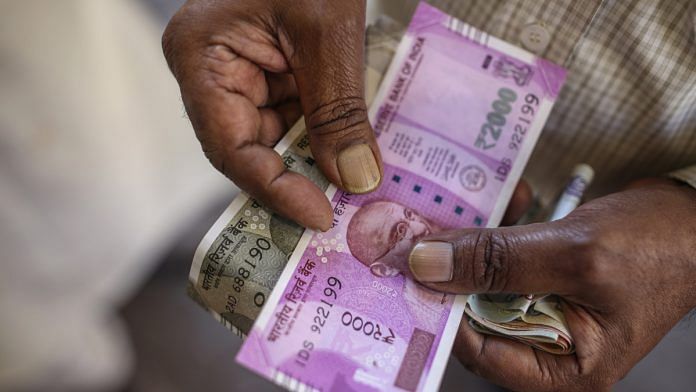Mumbai: The Indian banking sector will be among the last to recover from the Covid-19 shock as it entered the pandemic with an overhang of bad loans, global ratings major S&P said in its latest commentary on the global banking sector Monday.
In a report titled Global Banking: Recovery Will Stretch To 2023 And Beyond, the rating agency said it does not expect the world’s largest banking sectors, including in more than half of the G20 countries, to recover to pre-Covid levels until 2023, or beyond.
“India, Mexico, and South Africa are among the banking systems that will be slower to recover to 2019 levels — likely beyond 2023,” S&P said.
The rating agency said the Indian banking sector is considered a “late-exiter”, and will take longer time to recover but some ratios may return more quickly to pre-Covid levels as they were weak prior to the onset of the pandemic.
The effect on the banking sector of countries identified as “late-exiter” is “highly negative”, according to the rating agency.
“There were significant asset-quality issues in India prior to the onset of COVID-19, while asset quality was on an improving trend in many other jurisdictions,” it said. “As a result, the path to recovery will be more painful for emerging markets such as India.”
The rating major said the recovery prospects for the banking systems of Brazil, Russia, and other emerging markets appear more challenged than China’s. This is mainly because China has significantly lower Covid infections and still positive short-term economic growth prospects.
As of 21 September, Covid infections in China were under 100,000 — much lower than India (5.4 million), Brazil (4.5 million), and Russia (1.1 million), the agency said quoting data from John Hopkins Coronavirus Research Center.
Also read: Net worth wiped out, withdrawal restrictions, no resolution — PMC Bank’s worse off 1 year on
‘Overhang of NPAs’
The agency said, “We have taken negative rating actions on Indian banks and NBFIs (non-bank financial institutions) as operating conditions have deteriorated through the crisis. The country entered the pandemic with an overhang of high nonperforming assets.”
The shadow banks of the country have been facing stressed conditions since the IL&FS crisis broke out in 2018, which resulted in a significant liquidity crunch for these entities.
In its financial stability report in July, the Reserve Bank of India (RBI) had also indicated that the asset quality of Indian banks would worsen due to the pandemic. Gross non-performing asset (NPA) ratios, which have exhibited a downward trend since March 2019 after rising for more than five years, are again set to go up substantially.
The stress tests conducted by the banking regulator indicated that the gross NPA ratios of all scheduled commercial banks are likely to increase from 8.5 per cent in March 2020 to 12.5 per cent by March 2021 under the baseline scenario and to 14.7 per cent under a very severely stressed scenario.
To address the issue of stress in the banking sector, the RBI has allowed banks to restructure both corporate and retail loans without NPA classification, albeit with certain conditions.
Also read: Interest rate policy makers shouldn’t ignore stubborn food price inflation, RBI study says
‘Recovery will take years’
The rating agency, which had slashed India’s projected GDP growth to -9 per cent from -5 per cent earlier, said in its report that the path to recovery for banks in emerging markets like India will be painful.
“The banks’ recovery to long-term averages for key asset quality and profitability ratios will take years,” said S&P.
Even for less-affected banking jurisdictions, recovery to pre-Covid levels will unlikely come before end-2022, the agency said. These jurisdictions include China, Canada, Singapore, Hong Kong, South Korea, and Saudi Arabia.
“The hit on financial institutions globally has been unambiguously negative,” said S&P Global Ratings credit analyst Gavin Gunning.
S&P’s negative rating actions since 1 March to 7 September include 234 rating actions on banks and 101 rating actions on NBFIs. About 70 per cent of the rating actions have been outlook revisions.
It has predicted credit losses of about $2.1 trillion for 2020 and 2021 for the global banking sector, spurred by the pandemic.
Also read: Why Yes Bank, IL&FS, DHFL cases can become a headache for India’s next FATF assessment



